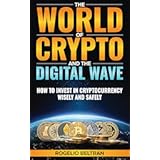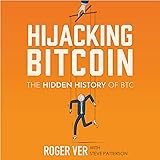The cryptocurrency market, particularly the sector of altcoins, undergoes a profound transformation in 2025. As highlighted in the video above, the landscape has shifted dramatically, moving away from short-term speculative gains towards projects with tangible value and institutional backing. Investors must understand these changes to navigate the market effectively and restructure their portfolios for sustained growth.
The Evolving Crypto Landscape: A New Era for Altcoin Season
The cryptocurrency market has entered an unprecedented era, driven largely by significant institutional adoption and a changing regulatory environment. This fundamental shift reshapes how capital flows and where genuine value resides within the ecosystem. Understanding these dynamics is crucial for anyone engaging with altcoins in 2025.
Institutional Influx and Market Divergence
The approval of a spot Bitcoin ETF in January 2024 marked a pivotal moment, followed closely by the launch of a spot Ethereum ETF by mid-2024. This regulatory recognition opened doors for massive institutional capital, fundamentally altering market dynamics. For example, BlackRock’s Bitcoin ETF alone amassed an astonishing $80 billion when Bitcoin reached $118,000, illustrating the scale of institutional commitment.
Following this, Ethereum ETFs also demonstrated immense appeal, with inflows peaking at $2.85 billion in a single week in early August, including a record daily inflow of $1.01 billion, nearly double Bitcoin’s $526 million on its record day. This significant capital influx validates Bitcoin as “digital gold” and Ethereum as a foundational smart contract infrastructure for DeFi and NFTs. However, this institutional embrace creates a stark divergence. Bitcoin and Ethereum continually reach new highs, while thousands of smaller altcoins struggle with dwindling liquidity and investor confidence. The anticipated “Altcoin Season”, where capital cascades into smaller projects, has yet to materialize as expected. This highlights a clear distinction between institutionally recognized crypto assets and purely speculative ventures.
Beyond Halving: Macroeconomic Influences
While the Bitcoin Halving in April 2024 was an important event, often preceding bull runs, its immediate impact on Bitcoin’s surge past $100,000 was amplified by several other powerful factors. Pro-crypto policies from governments, combined with robust ETF inflows and the inherent scarcity effect, created a fertile ground for growth. This indicates that while Halving provides a foundational catalyst, institutional engagement and favorable policies are the real engines driving market momentum.
Globally, economic conditions play a significant role. The Purchasing Managers’ Index (PMI) in the US, a key indicator of business cycles, has remained below 50 for a record duration. This suggests the economy is not yet stable enough for widespread speculative booms across the entire crypto market. Additionally, high interest rates have exerted downward pressure. The Federal Reserve initiated its first rate cut in September 2025, reducing rates by 25 basis points to a range of 4-4.25%. While future cuts are anticipated to alleviate borrowing costs and stimulate economic growth, the Fed Chairman Jerome Powell maintains a cautious stance, emphasizing data-driven decisions. These macroeconomic shifts signal a market in accumulation and reevaluation, where Bitcoin and Ethereum lead, and many altcoins await clearer signals for sustained growth.
The Transformation of Altcoin Season: Hype vs. Utility
The dynamic of “Altcoin Season” has fundamentally changed from previous cycles. Investors observing altcoins in 2025 will notice a stark contrast to earlier periods. This evolution is vital for strategic investment decisions.
From Speculation to Substance: A Maturing Market
Past cycles, such as 2017 and 2021, saw many altcoins achieve significant price pumps based merely on social media mentions, community hype, or short-term FOMO. Individual investors easily profited without needing to scrutinize a project’s underlying product, utility, or business model. However, 2025 represents a different era. The market is maturing, undergoing a deep restructuring where only projects with genuine value propositions can thrive.
A significant reason for this change lies in outdated tokenomics models. Many older altcoins were designed to reward early participants or maintain network operations without generating real user demand. When large token unlocks occur from development teams or early investors, immense sell pressure emerges, often leading to a steady decline in price. This means projects receiving extensive media coverage do not necessarily possess long-term viability. Today’s sophisticated investors no longer pour money into projects based solely on trends or empty promises. They seek measurable revenue, active user bases, and long-term applicability. This discerning approach forces the market to filter out unsustainable projects, favoring those with real-world adoption, deflationary mechanisms, revenue sharing models, or proven profitability.
Emerging Narratives Driving Real Value
The market’s maturation is evident in the rise of new narratives directly linked to practical applications and verifiable utility. These trends represent key areas for investor focus in the current cycle:
- Real World Assets (RWA): This growing trend involves tokenizing traditional financial assets, such as US Treasury bonds or private credit, onto the blockchain. RWA offers predictable yields and regulatory compliance, making crypto a global financial tool highly attractive to traditional financial institutions. This facilitates significant capital inflows with reduced risk. Ondo Finance, for example, tokenizes real-world assets like stocks and ETFs, enabling direct blockchain investment.
- AI + Blockchain: The convergence of artificial intelligence and blockchain technology creates decentralized marketplaces for data, computational power, or AI models. Project tokens in this sector act as more than just payment methods; they incentivize user and developer participation, ensuring transparency and preventing monopolization. This generates genuine demand, moving beyond pure speculation. Bittensor exemplifies this by rewarding users who contribute computing resources via TAO tokens, promoting transparency and decentralized AI development.
- DePIN (Decentralized Physical Infrastructure Networks): DePIN projects directly link tokens to physical services, such as decentralized wireless networks or data storage solutions. Tokens in these ecosystems pay for services, creating measurable revenue and linking directly to core value. Helium, for instance, uses its HNT token to compensate users providing decentralized Wi-Fi network services.
- The Unique Case of Meme Coins: Meme coins operate entirely differently from projects focused on real-world utility or sustainable tokenomics. Their value is driven by viral potential, community engagement, and crowd behavior. Capital flows into meme coins primarily from individual investors seeking quick profits and willing to accept high risks. Dogecoin, initially a joke, grew into a popular cryptocurrency through its strong community and meme brand, rather than technological innovation or practical applications. While offering exponential returns, meme coins do not reflect fundamental value and are highly volatile, positioning them as high-risk speculative assets, distinct from long-term trends.
In this market cycle, projects failing to solve real-world problems or lacking long-term sustainability will struggle to survive. The competitive environment means large capital is no longer allocated to teams that only offer promises. Instead, it seeks out projects with working products, transparent tokenomics, and the ability to generate verifiable profits. Recognizing this shift allows investors to differentiate between quality assets and fleeting trends, a crucial insight for navigating altcoins in 2025.
Crucial Warning Signs for Your Altcoins 2025 Portfolio
The cryptocurrency market’s rapid pace means that projects once popular can quickly fade into obscurity. To avoid holding underperforming assets, investors must identify key warning signs indicating an altcoin is in distress. Recognizing these signals allows for proactive portfolio adjustments and the pursuit of new opportunities.
Identifying Outdated and Underperforming Projects
Many projects that were once market darlings now struggle to maintain relevance. This often stems from the relentless pace of innovation within the crypto space. The sheer volume of new projects constantly emerging disperses community attention, making it challenging for older projects to retain their spotlight. A project failing to continuously update its technology, expand its ecosystem, or deliver tangible user value risks being left behind.
Consider early DeFi platforms like SushiSwap or PancakeSwap, which dominated Total Value Locked (TVL) in 2021. Today, they face stiff competition from newer platforms such as Uniswap V4 and various Layer 2 Decentralized Exchanges (DEXes) offering faster transactions and lower fees. Similarly, older Layer 1 blockchains like EOS and NEO, once touted as “Ethereum killers,” have largely lost their pioneering edge and struggle with innovation. These examples underscore that the market waits for no one. If a project’s token is primarily traded on small exchanges with low volume, and its community discussions stray from product development, these are clear indicators of declining appeal and potential obsolescence.
Missing New Narratives and Holding Legacy Trends
The crypto market operates on narratives, with capital consistently flowing into emerging trends where real profits are being generated. Many investors, however, cling to altcoins associated with outdated narratives that have lost momentum due to a lack of genuine products or sustainable revenue. As observed in 2024-2025, prominent trends include RWA, AI, DePIN, and even Meme Coins. However, not all trends maintain their heat indefinitely.
It becomes imperative for investors to discern where capital is currently flowing and to flexibly rebalance their investment portfolios accordingly. Sticking rigidly to old narratives can mean missing out on significant new opportunities unfolding elsewhere in the market.
Inflationary Tokenomics and Weak Project Management
Even if an altcoin’s market price appears stable or even rising, poor token distribution mechanisms can subtly erode its real value. If a project constantly issues new tokens to reward its team, early investors, or through airdrops, the total supply inflates without a corresponding increase in real demand. This dilutes the value of each individual token held by investors. Therefore, diligently checking token unlock schedules, especially for “cliff unlocks” where large batches of tokens become liquid, is critical. These events frequently lead to substantial sell pressure from early investors taking profits, causing sharp price declines.
Finally, a crucial but often overlooked red flag is a weak or absent development team and poor governance. If the founding team disappears, communication channels go silent, or the project roadmap is abandoned, these signal significant risks. Some older DeFi projects might continue running on smart contracts but lack active development, leaving them vulnerable to unpatched bugs, no improvements, and sudden price drops during unforeseen incidents. These indicators provide a comprehensive framework for assessing potential altcoin investments, helping investors avoid capital traps and allocate funds more intelligently within the dynamic altcoins 2025 landscape.
Strategic Actions for Restructuring Your Altcoins 2025 Portfolio
After identifying underperforming or outdated altcoins within your portfolio, the next crucial step is to develop a strategic action plan. This process of portfolio restructuring is more than just selling assets; it involves a clear strategy to mitigate risks, optimize returns, and position your investments for future market waves.
Step 1: Pruning Underperforming Assets
The initial and often most challenging step is to liquidate altcoins that lack a genuine product generating revenue, suffer from severe tokenomics inflation, or have lost community and institutional backing. Continuing to hold such assets merely ties up capital and time. While many hope these altcoins will rebound during the next “Altcoin Season”, history shows that most tokens of this nature rarely recover to previous highs. Instead of holding out for a full recovery, accepting small, strategic losses can free up capital for more promising ventures.
For example, many investors held onto Luna Classic (LUNC) post-2022 collapse, hoping for a resurgence, but it has largely failed to regain significant value. Conversely, those who decisively cut losses and reallocated to emerging narratives like RWA or DePIN projects have often seen substantial gains. The goal here is to release “dead” capital, allowing it to be redeployed into assets with genuine growth potential.
Step 2: Reallocating Capital to Strong Narratives
Once your portfolio is cleansed, the next move is to redirect capital towards areas attracting real institutional and organic capital flow—namely, the currently dominant narratives. This is not the time to spread your investments thinly across dozens of altcoins. Instead, focus on a select few groups with clear advantages and strong trends. Look for projects with demonstrable real-world usage where tokens facilitate payments, network operations, or staking, farming, and lending activities. Prioritize projects generating profits from actual value creation, not simply by issuing more tokens to existing holders.
Step 3: Diversified Portfolio Management
A balanced portfolio strategy combines safety with growth potential. A common approach involves dividing your capital into three distinct segments:
- 60% Safe Assets: Allocate a majority of your capital to stable and recognized assets such as Bitcoin (BTC), Ethereum (ETH), or stablecoins. This core component serves as a value preserver and provides crucial liquidity, enabling you to capitalize on market dips or new opportunities.
- 30% Potential Growth Assets: Dedicate this portion to promising altcoins that are either leading platforms within strong narratives or mid-cap projects with market capitalizations between $1 billion and $5 billion. These assets offer significant growth potential while maintaining a moderate risk profile.
- 10% High-Risk Assets: Reserve a small portion for speculative plays like micro-cap tokens or meme coins. While these can offer exponential returns (10x, 100x), be prepared for the possibility of losing the entire investment. This segment is purely for high-risk, high-reward opportunities.
In conjunction with capital allocation, entry timing is equally vital. Avoid “all-in” lump-sum investments. Instead, employ a Dollar-Cost Averaging (DCA) strategy, spreading purchases over time. For example, if you divide your capital into three parts, invest 30% at what you consider a reasonable price, another 40% if the price drops by 10-20%, and the remaining portion during deeper market corrections. This strategy optimizes your average cost basis and reduces the risk of buying at market peaks.
Step 4: Regular Portfolio Rebalancing and Risk Management
Portfolio restructuring is not a one-time event but an ongoing process that keeps your investments healthy and responsive to market changes. Regular rebalancing is crucial. If an altcoin performs as expected, consider taking full profits when the market shows signs of exhaustion or slowing momentum. Alternatively, if the trend remains positive, take partial profits to secure gains while retaining exposure to further upside.
Should prices decline, your secured profits can provide dry powder to repurchase assets at better entry points, enhancing overall portfolio performance. If an altcoin underperforms or incurs losses, calmly reassess the situation. If the project’s fundamentals remain strong and the dip is market-wide, consider DCA to lower your average cost. However, if the project has lost liquidity, community support, or its narrative has faded, it is usually wise to cut losses decisively and reallocate funds to more promising ventures.
For highly volatile assets like meme coins, it’s essential to be extremely disciplined. If a meme coin surges by 200-300%, this is often a prime opportunity to take substantial profits. While the temptation to hold for more gains is strong, the risk of a sharp reversal is highest at these peaks. Withdraw your initial capital and a portion of profits, only retaining a small amount to ride any further long-term movement. The reclaimed funds can be converted to stablecoins or reallocated to other projects that have not yet seen significant gains, optimizing overall performance and maintaining a healthy risk profile. The ultimate goal is to keep your capital actively working, even during sideways or declining market conditions.
It’s vital to acknowledge that higher returns often come with higher risks. Even reputable protocols can face technical glitches, smart contract hacks, or stablecoin de-pegging events, as seen with UST in 2022. Staking assets often involves lock-up periods, preventing immediate withdrawal during high volatility. Therefore, only allocate a reasonable amount, prioritizing well-established, reputable platforms.
Crucially, always maintain a reserve of stablecoins, ideally at least 10% of your total portfolio. This “dry powder” is invaluable for seizing new opportunities or navigating market crises, allowing you to enter positions at optimal prices. Many investors miss significant market moves because they lack available capital when the time is right. Effectively managing your altcoins in 2025 demands vigilance, adaptability, and a strategic approach to capital allocation and risk management.







